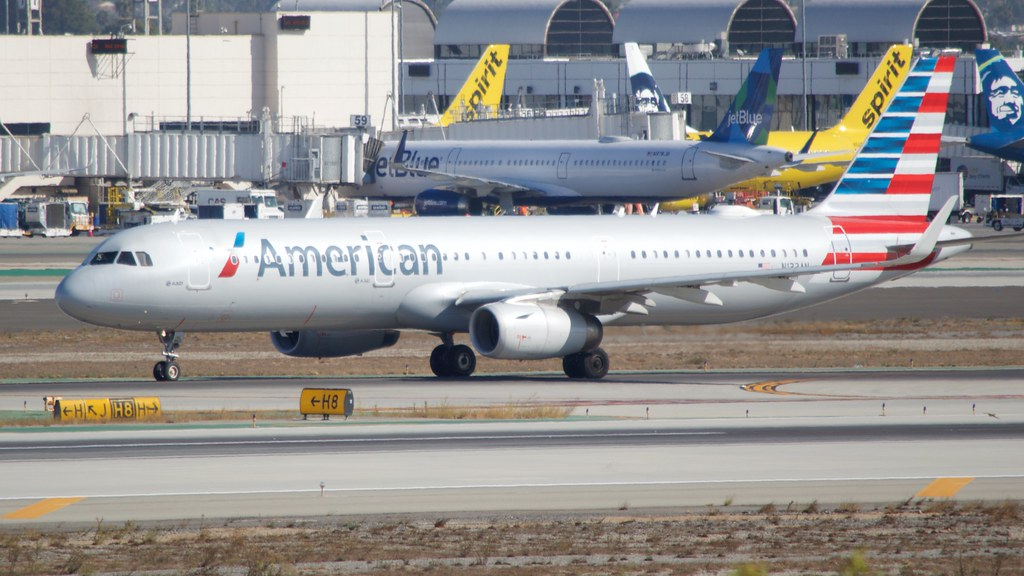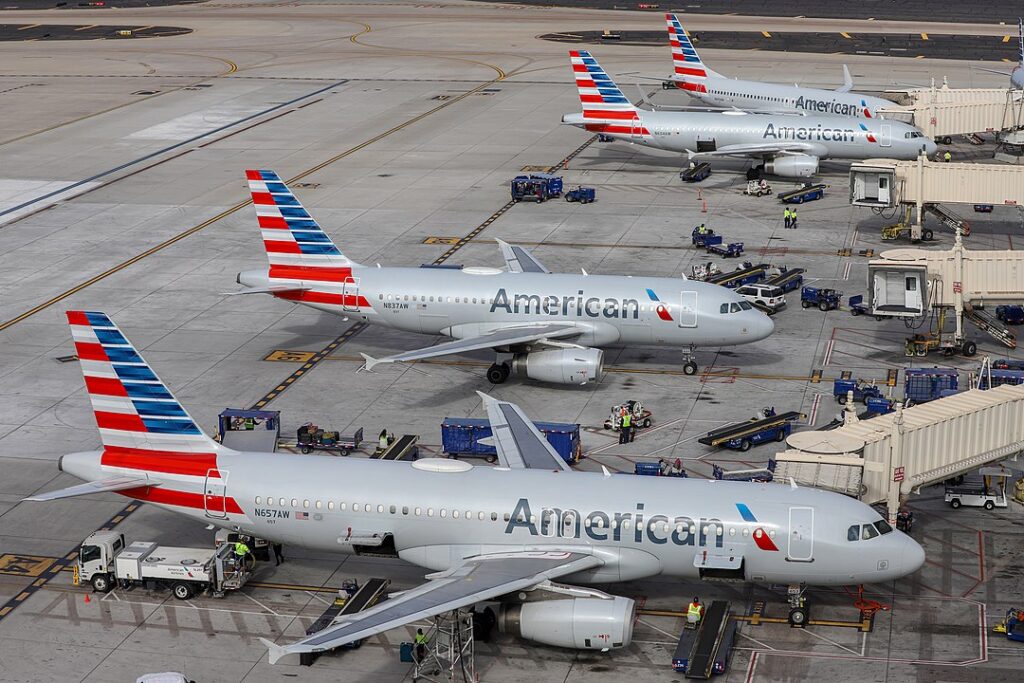ARIZONA- According to air traffic control audio, two American Airlines (AA) planes experienced emergencies at the same airport in Arizona within a 15-minute timeframe.
On Friday, an Airbus operated by the airline was en route from Washington, D.C. (DCA), to Phoenix (PHX) around 10 a.m. MT (noon ET) when the flight crew reported a flap failure. Subsequently, at 10:12 a.m., another Airbus departing from Phoenix, destined for Mexico, reported low oil pressure in one of its engines and requested a return to the airport.

American Airlines Emergency in Phoenix
The flight from Washington, D.C., circled over the airport for approximately half an hour before successfully landing, while the flight to Mexico returned around 20 minutes after take-off.
It’s worth noting that flights declaring emergencies, as per FlightRadar, occur more frequently than commonly perceived, with several incidents reported daily.
Emergencies can stem from a variety of reasons, ranging from onboard medical issues to aircraft-related problems, and not all necessitate immediate action on the ground but are primarily intended to alert flight control and airport first responders to the situation.
In various instances, a flight may divert to a nearby airport or return to its initial departure point. In such scenarios, flight control at the relevant airport must coordinate to ensure a clear runway for an emergency landing.
According to air traffic control audio, following the declaration of an emergency by the flight crew of the first American Airlines plane, the pilot communicated to Phoenix flight control, indicating there were 197 people on board, and the aircraft had a remaining fuel supply of two hours. The pilot subsequently requested an extended final approach.
The aircraft was then placed in a holding pattern over Phoenix. Concurrently, the second American Airlines flight was in the process of taking off. Roughly two minutes after departure, it reported experiencing low oil pressure in its number two engine.

Difficult Situation for ATC
When questioned by flight control about the urgency of the situation, the pilot confirmed that it was indeed time-sensitive.
While the aircraft experiencing a flap failure circled over the western part of the city, the second aircraft initiated a southward turn to return to the airport. The pilot reported having 132 people on board, with a payload of 23,400 pounds.
Approximately 12 minutes past the hour, the first flight became aware of the issue with the second aircraft.
“I’m going to keep you on hold for a second,” the flight controller informed the first aircraft. “Your company is coming in. Got an issue.”
Subsequently, the pilot of the second plane requested permission to continue heading west for a few miles.
“We’re going to need your longest available runway given the flight control problem we’re facing,” conveyed the pilot of the first plane to flight control, expressing the urgency to “get this aircraft on the ground.”
Subsequently, the second plane altered its course eastward and commenced its final descent. Simultaneously, ground fire crews were notified of the anticipated arrival times for both planes.
The pilot of the second aircraft informed flight control that the second engine had also experienced a loss of oil.

Fortunately Landed Safely
The second flight successfully returned to Phoenix airport around 10:30 a.m. local time, and flight data indicates that it managed to take off a few hours later, subsequently reaching its destination in Guadalajara, central western Mexico.
Approximately seven minutes later, the first flight executed a successful landing on another runway. Flight data reveals that the plane has since continued to operate with passengers along the same route.
This incident is not the first close call involving an American Airlines flight this year. Recent flight data suggested that an American Airlines plane came close to colliding with another aircraft during its landing at John F. Kennedy Airport in New York.
Additionally, in April, an American Airlines flight bound for Phoenix had to make an emergency landing due to an engine catching fire following a bird strike.
Stay tuned with us. Further, follow us on social media for the latest updates.
Join us on Telegram Group for the Latest Aviation Updates. Subsequently, follow us on Google News.

